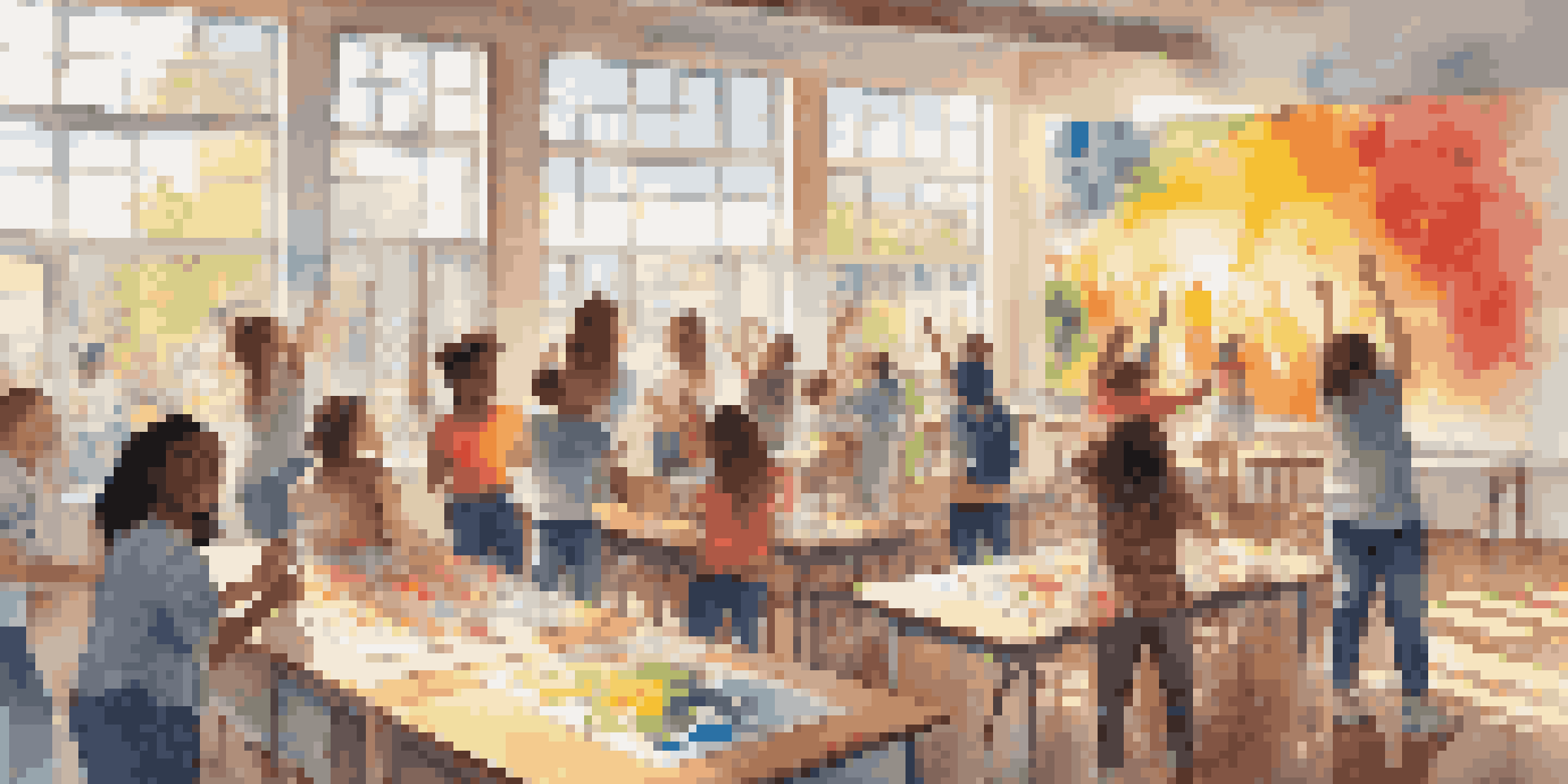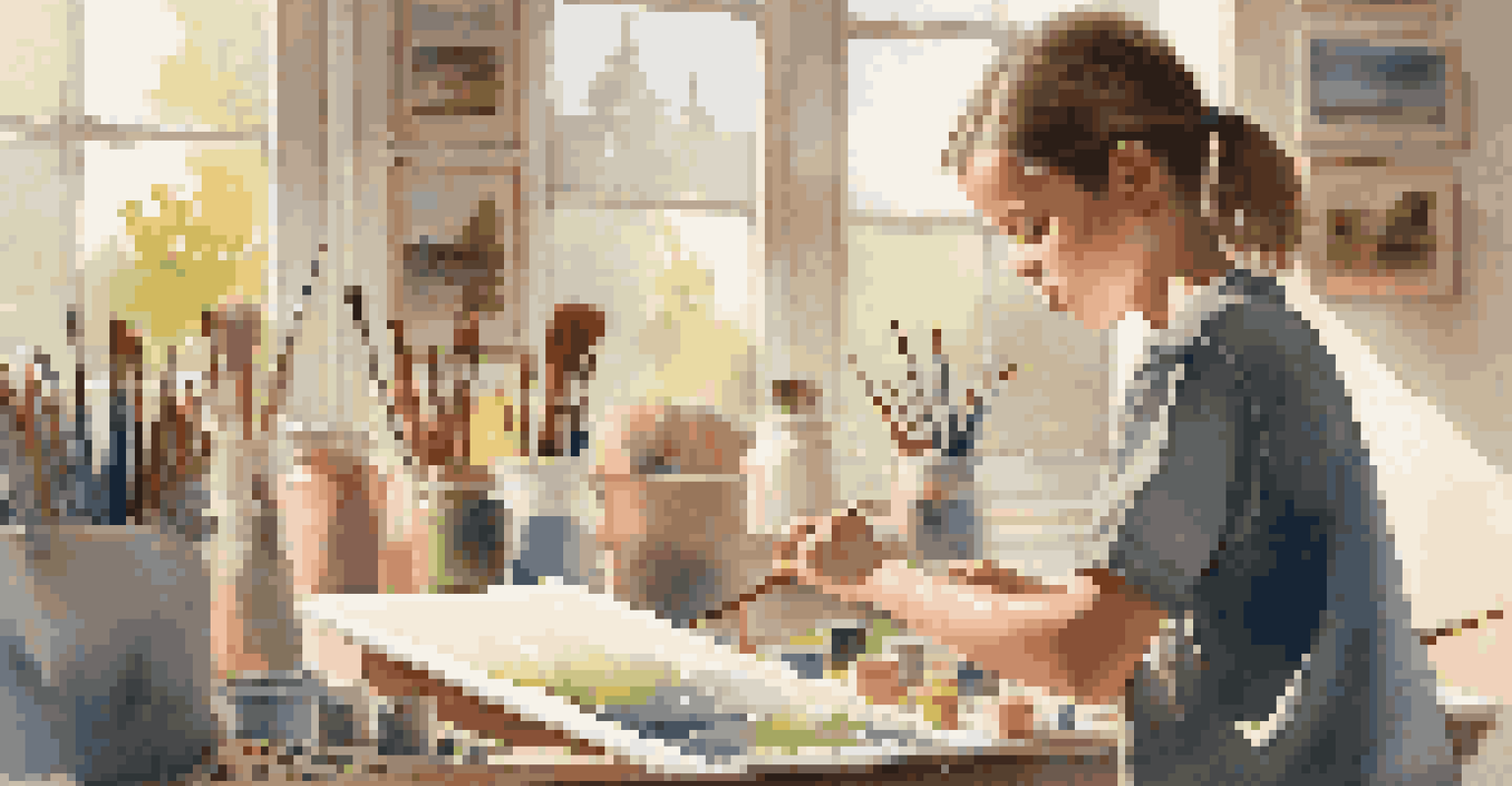Building Resilience Through Art Education in Schools

The Importance of Resilience in Today's World
In a rapidly changing world, resilience has become a crucial skill for students. It allows them to bounce back from setbacks and face challenges with confidence. By cultivating resilience, we equip students with the tools they need to navigate life's ups and downs, promoting both mental health and academic success.
Art is not what you see, but what you make others see.
Resilience isn't just about overcoming obstacles; it's also about adapting to change and learning from experiences. When students learn to handle adversity, they develop a growth mindset, which encourages them to see failures as opportunities for growth. This mindset can dramatically impact their overall well-being and future endeavors.
Incorporating resilience-building activities into education can significantly enhance a student's ability to cope with stress. One effective way to foster this skill is through art education, which offers a creative outlet for self-expression and reflection.
Art Education: A Creative Outlet for Expression
Art education provides students with a unique platform to express their thoughts and feelings. Whether through painting, sculpture, or digital media, students can communicate their experiences in ways that words may not fully capture. This form of expression is incredibly therapeutic and can help students process their emotions.

Engaging in creative activities can also reduce stress and anxiety, allowing students to find a sense of calm amidst chaos. For instance, a study found that students who participated in regular art classes reported lower levels of stress compared to their peers who did not engage in artistic activities. This suggests that art can serve as a healthy coping mechanism.
Resilience Boosts Student Success
Cultivating resilience equips students with the confidence to face challenges and promotes both mental health and academic achievement.
Moreover, by encouraging students to explore their creativity, art education fosters a sense of ownership and pride in their work. This can boost self-esteem and contribute to a more positive self-image, which is essential for building resilience.
Collaboration and Community in Art Projects
Art projects often require collaboration, which teaches students valuable teamwork skills. Working together on a shared vision helps students learn how to communicate effectively, compromise, and support one another. These collaborative experiences can create a sense of belonging, which is essential for emotional resilience.
The greatest weapon against stress is our ability to choose one thought over another.
When students engage in group art projects, they also develop empathy by understanding different perspectives. This fosters a supportive environment where students feel safe to express themselves. Such interactions can lead to friendships that provide additional emotional support in challenging times.
Furthermore, these community-oriented projects can extend beyond the classroom. Creating murals or organizing exhibitions can instill pride in their school and community, reinforcing the idea that their contributions matter and can make a difference.
Developing Problem-Solving Skills Through Art
Art education encourages creative problem-solving, an essential component of resilience. When faced with artistic challenges, such as how to depict a concept or overcome a technical hurdle, students must think critically and explore various solutions. This process of trial and error mirrors real-life situations where adaptability is key.
For example, a student might struggle to convey a specific emotion in their artwork. Through experimentation, they learn to adjust their approach, whether by changing colors or techniques. This experience reinforces the idea that setbacks are part of the learning process and can lead to unexpected breakthroughs.
Art Fosters Emotional Intelligence
Engaging in art education enhances students' emotional intelligence, enabling them to express feelings and develop empathy towards others.
As students become more adept at navigating these artistic challenges, they develop confidence in their ability to handle difficulties outside the classroom. This newfound resilience can translate into other areas of their lives, including academics and personal relationships.
Fostering Emotional Intelligence Through Art
Art education plays a vital role in developing emotional intelligence, which is closely linked to resilience. By engaging with art, students learn to identify and express their feelings, as well as recognize emotions in others. This heightened awareness can improve their interpersonal relationships and deepen their understanding of themselves.
For instance, participating in discussions about their artwork can encourage students to articulate their thoughts and feelings. This process not only builds confidence but also promotes active listening and empathy when discussing peers' creations. These skills are essential for forming supportive relationships, which are crucial during challenging times.
Ultimately, fostering emotional intelligence through art can lead to healthier coping strategies and better conflict resolution skills. Students equipped with these abilities are more likely to navigate life's challenges with resilience and grace.
Integrating Art Across the Curriculum
Integrating art into various subjects can amplify its benefits, promoting resilience throughout the educational experience. For example, incorporating art projects into science lessons allows students to visualize complex concepts, making learning more engaging and memorable. This interdisciplinary approach can enhance their overall academic performance.
Moreover, when students see the connections between different subjects, they develop a more holistic understanding of the world around them. This interconnectedness can foster curiosity and a love for learning, encouraging students to tackle new challenges with enthusiasm rather than fear.
Collaboration Builds Community Bonds
Collaborative art projects create a sense of belonging and support among students, essential for developing emotional resilience.
By weaving art into the curriculum, educators create an environment where creativity thrives. This not only nurtures resilience but also prepares students to think critically and approach problems from unique angles, skills that are invaluable in today's world.
The Lasting Impact of Art Education on Resilience
The benefits of art education extend far beyond the classroom, leaving a lasting impact on students' lives. When students learn to express themselves creatively and develop resilience, they carry these skills into adulthood. This foundation can lead to healthier coping mechanisms and a greater ability to handle life's challenges.
Moreover, resilient individuals are more likely to contribute positively to their communities. As students grow into adults who value creativity and emotional intelligence, they become advocates for change, using their experiences to inspire others. This ripple effect can transform communities and foster a culture of resilience.

In conclusion, investing in art education is not just about teaching creativity; it's about equipping students with essential life skills. By fostering resilience through art, we empower the next generation to thrive in an unpredictable world.